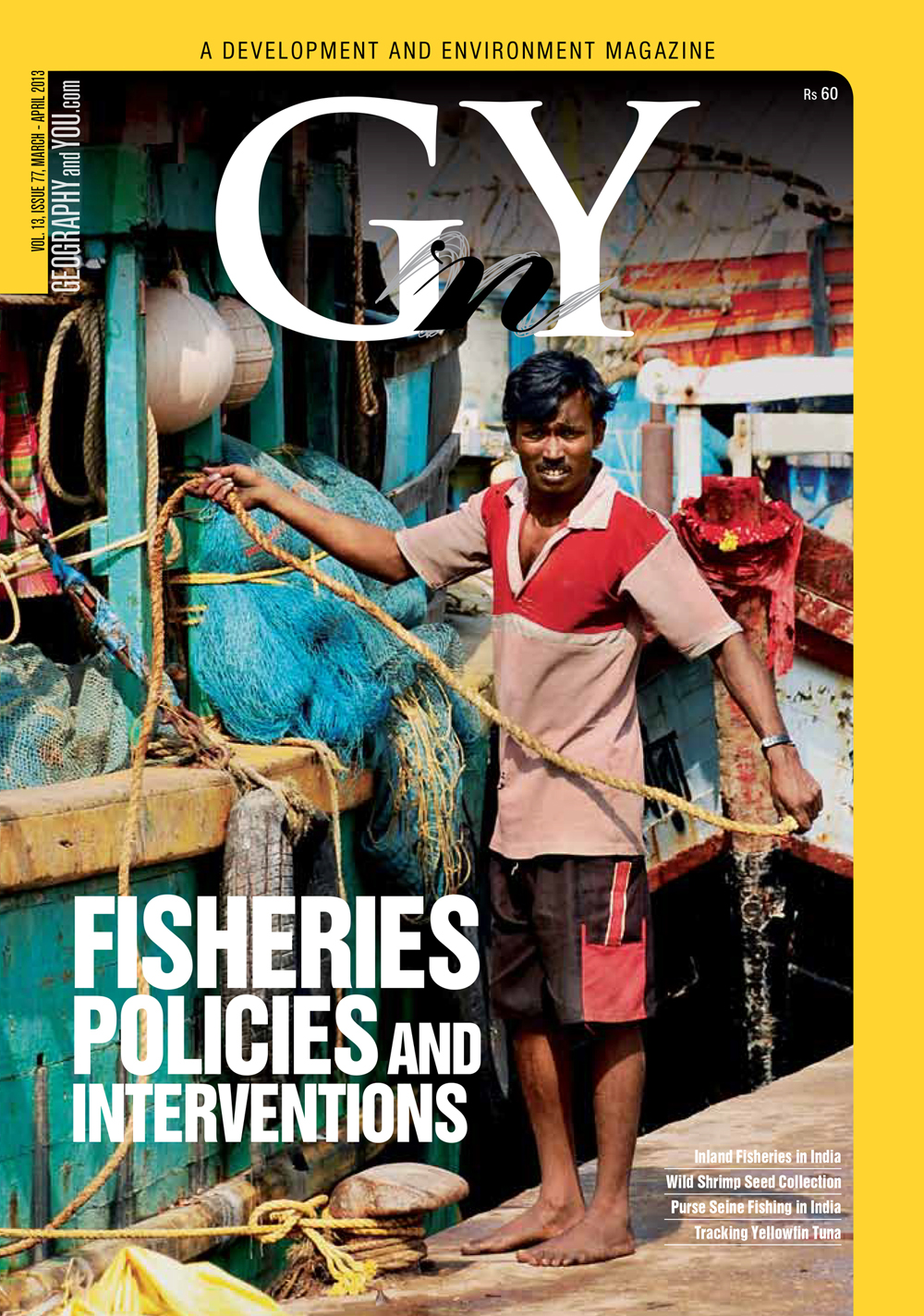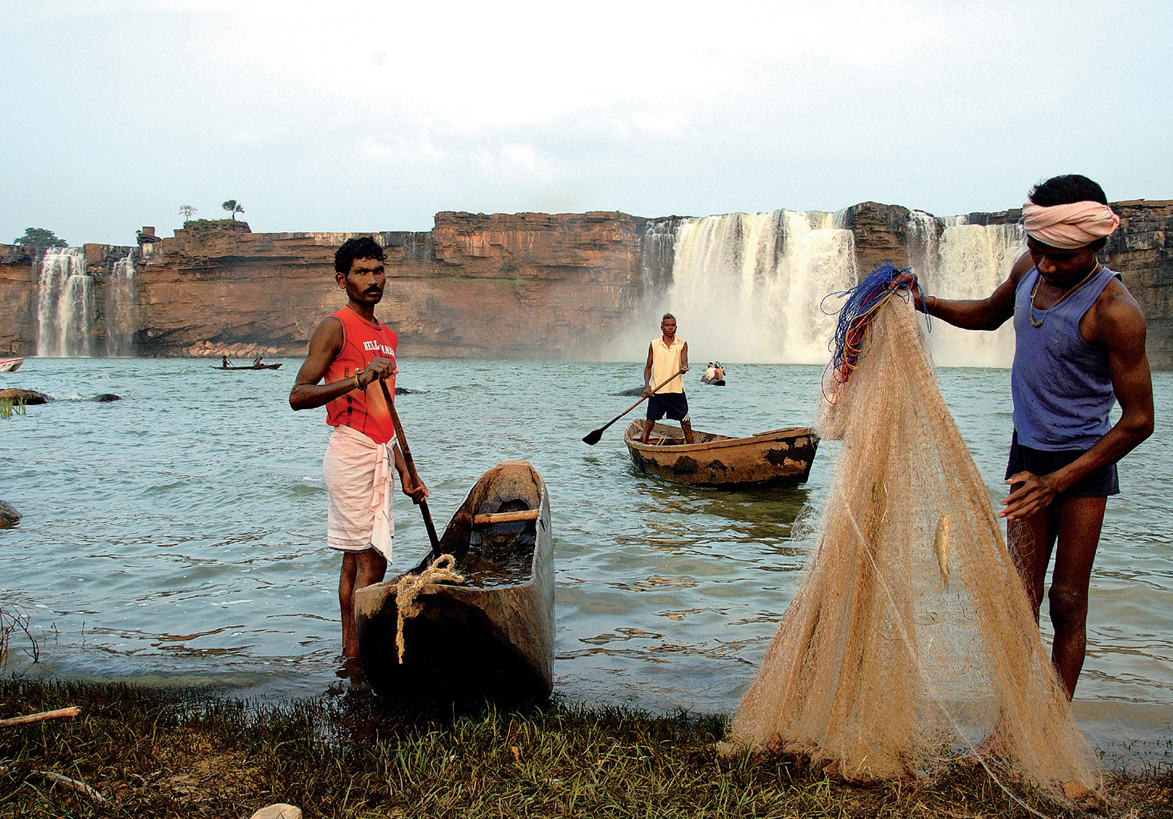
Inside this issue
Policies and interventions
Fisheries provide employment to 14 million fishers—but today the highly dispersed and unorganised sector is calling out for appropriate tools to create good database to enable better planning. It is envisaged that the national policy on inland fisheries should strike a balance between aquaculture and various enhancement practices to achieve higher fish productivity, environmental sustainability and social equity.
Climate change is seriously impacting coldwater fish species with a significant loss of coldwater fish biodiversity and a reduction in fish habitat.
Impacts, vulnerability and resilience of fisheries sector to climate change in India.
Wild Shrimp Seed Collection in Hoogly Estuary, West Bengal Shrimp farming, the most lucrative of aquaculture option in the east coast of India sources wild seed for its sustenance. With undiminished demand the seed collection today threatens the sustainability of a variety of species that are destroyed as bycatch. Despite the ban on collection being enacted—it remains without effect.
Hilsa landing has drastically declined in the recent decades. The costliest fish in the nation, the hilsa, a cultural link to the heritage of eastern India is slowly being lost. It is imperative that mass destruction of the juveniles are stopped and it is towards this end that the fishing technology needs to be upgraded.
Purse seining is one of the most efficient and advanced commercial fishing methods allowing fishermen to venture deeper and farther into waters well beyond the Indian coast.
Report
Ocean Acidification, Sea Level Rise And Extreme Events-DRTC 2013 Concludes.
Primitive tribal
India's outdoors
In brief
A growing interest in aquarium fishes has resulted in a steady increase in ornamental fish trade globally— with an export earning of 251 million USD (FAO 2004) and an annual growth rate of 8 per cent. In 2006-07, the world trade of ornamental fish was estimated to be nearly Rs 3950 crore of which
The fisheries sector contributed Rs 67913 crores to the gross domestic product (GDP at current prices) during 2009-2010, amounting to 0.96 per cent of India’s total GDP (MoSPI, 2011). The share of fisheries sector in the total GDP at factor cost in current prices increased from 0.40 per cent in 19
Dear readers Being the quintessential Bengali, fish is my weakness. The nutritional security it provides apart from the fact that it engages millions of Indians in a sustainable incremental trade, makes ‘fish-eating’ all the more worthwhile. With more than 10 per cent of global biodiversity in

